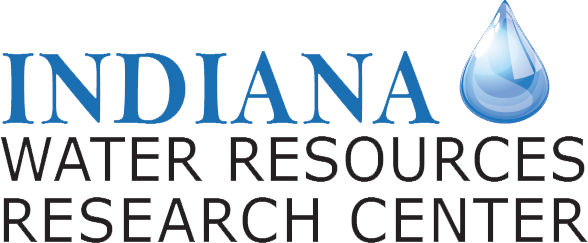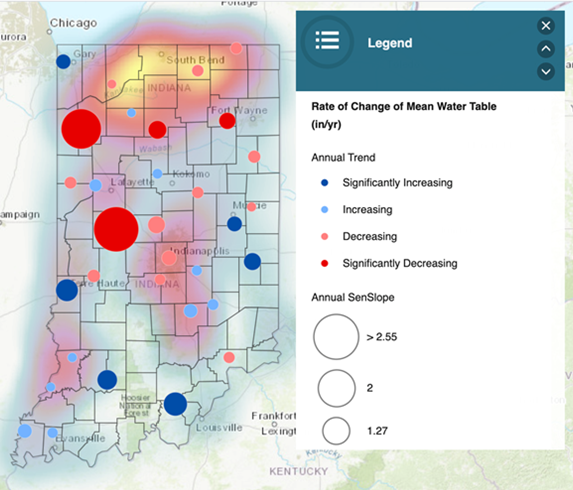Factsheet – An on-line tool to evaluate groundwater sustainability in the Upper Wabash basin
A research project funded by the Indiana Water Resources Research Center through the U.S. Geological Survey’s 104B annual base grants (section 104 of the Water Resources Research Act of 1984, as amended).

Start Date: 2021-09-01
End Date: 2022-08-31
Total Federal Funds: $24,304
Total Non-Federal Funds: $54,779
The state of Indiana does not experience wide-spread water scarcity as water resources are currently sufficient. It receives more than 1000 mm of precipitation each year and out of that, in some areas more than 250 millimeters recharge groundwater aquifers. As a result, groundwater resources have traditionally provided a buffer for cities and farms against drought. However, agricultural intensification and changing weather patterns mean that groundwater conflicts and ecosystem impacts during times of drought are increasing, and adaptation and adaptable management of water resources may be needed even in areas that are traditionally water abundant such as Indiana.
In order to quantify how increasing trends in groundwater withdrawals impact water availability, a simulation tool that can integrate changes in groundwater storage is needed. This project will quantify variation in groundwater resources considering alterations in projected recharge and demand to determine whether a sufficient volume of water will be available when and where it is needed.
Research Objectives
1. Quantify groundwater withdrawals in Indiana through 2060 by sector for different future climate scenarios.
2. Quantify variability in aquifer storage and streamflow response for different future water use scenarios.
3. Disseminate research outcomes via an interactive website, presentations, and publications.

Screenshot of the State of Indiana Waters website (https://iwrrc.org/indiana-water/) showing historic trends in groundwater level superimposed on a heat map of significant water withdrawals. The proposed work will add layers for future water trends.
Researcher Profile


Major Conclusions & Significance
Total groundwater withdrawals in Indiana are projected to increase in the coming decades due to changes in both socio-economic and climatic drivers. Projection of groundwater withdrawals revealed the following:
What Does This Mean For Indiana?


